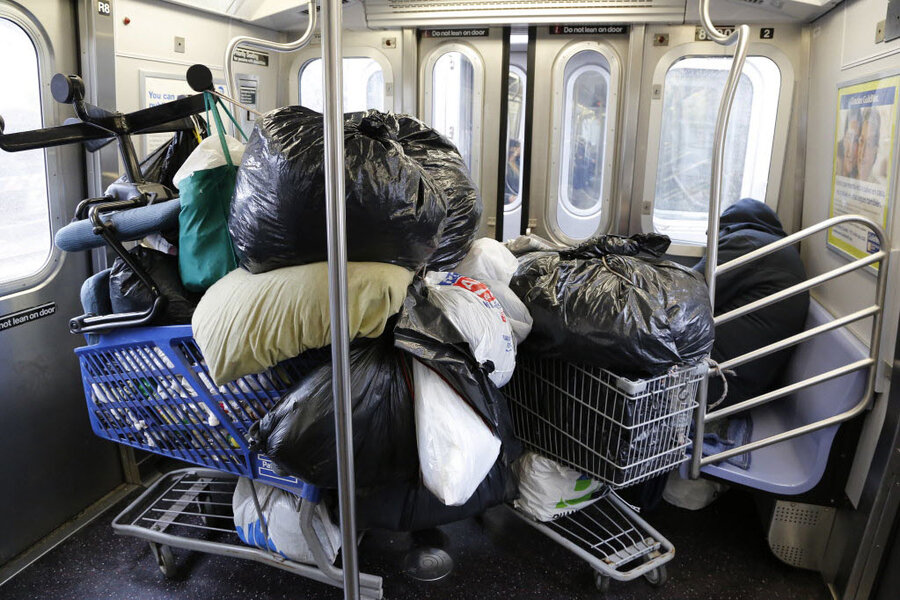New York boosts security at homeless shelters: Will that help?
Loading...
After a recent spate of stabbings, New York Mayor Bill de Blasio said Tuesday that the city will step up security at its homeless shelters to prevent violence.
City officials will re-introduce a domestic violence program that ended in 2010, for one, as family incidents are the most common form of shelter violence. The mayor also said that New York Police Department will retrain all security staff at the Department of Homeless Services, and institute a more extensive reporting system for shelter incidents.
“I’ve been clear that we are going to own the challenges of homelessness and be transparent about how serious they are and what we are doing to deal with them,” the mayor said in a statement, as the Associated Press reported.
There has been a push statewide, particularly during winter months, to bring people off the streets and into shelters to keep them safe during frigid nights. In January, Gov. Andrew Cuomo issued a controversial executive order requiring New York City and other municipalities to do this.
“It’s about love. It’s about compassion. It’s about helping one another and basic human decency,” Governor Cuomo told NY1, a local cable news outlet at the time.
But opponents of the decree argue that conditions at shelters are often worse and more dangerous than those in the streets.
“A lot of people don’t want to go to the shelter because they’ve got to worry about people stealing your stuff. People have knives and guns and stuff – and I’m supposed to feel some sort of safe haven?” Jeremiah Murphy, a man who lives with his family in El Camino Inn, a homeless shelter in Queens, told the Monitor in January.
The following month, police arrested a fugitive suspected of stabbing his girlfriend and all three of her children at a hotel used to house homeless people. The woman and two of the children died. It was the third fatal stabbing at a homeless shelter in several weeks.
“Violence – both physical attacks as well as serious threats of bodily harm – is undoubtedly the major deterrent preventing our most marginalized neighbors from accessing lifesaving shelter,” Mary Brosnahan, president and CEO of the Coalition for the Homeless in New York City, told the Associated Press.
But violence is one part of a larger problem. A December audit by New York City Department of Investigations of 101 randomly selected housing units out of the city’s 155 shelters that serve families with children found “deplorable conditions,” where families lived among rodents, mold, peeling paint, and broken windows.
“Over 23,000 homeless children in our city slept in nightmare conditions last night, many of them surrounded by peeling paint, some feeling the chill from broken windows, and others sharing space with vermin,” Comptroller Scott Stringer said in a statement. "There's absolutely no excuse for any of this."
The number of New Yorkers sleeping in shelters has nearly doubled over the past decade. New York City has admitted nearly 60,000 people, nearly 24,000 children, into temporary housing and shelters in the past two years. About 4,000 additional people sleep on the streets nightly.







